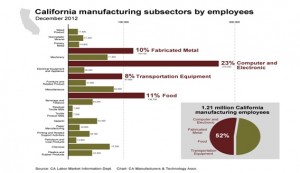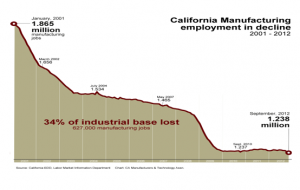In his State of the Union address, President Obama declared in his intent to complete negotiations for a Trans-Pacific Partnership (TPP). The Obama administration has pursued the TPP through the offices of U.S. Trade Representative Ron Kirk instead of under the auspices of the Department of State.
This was the first time negotiations to create a free trade zone with Pacific Rim countries were made public although 15 rounds have been concluded. Eleven nations are participating: Australia, Brunei, Canada, Chile, Malaysia, Mexico, New Zealand, Peru, Singapore, the United States and Vietnam. Although Japan and China are not presently participating in TPP negotiations, “docking provisions” being written into the TPP draft agreement would permit either Japan or China to join the TPP at a later date without suffering any disadvantage.
To implement the TPP free-trade agreement, Congress will be asked to surrender its responsibility under Section 1, Article 8 of the Constitution to regulate commerce with foreign nations, and grant President Obama extra-constitutional “Trade Promotion Authority” to negotiate the final TPP agreement. The administration seeks to gain “fast-track authority,” a provision under the Trade Promotion Authority that requires Congress to review an FTA under limited debate, in an accelerated time frame subject to a yes-or-no vote by a simple majority vote rather than a two-thirds vote, as required for the ratification of a formal treaty.
Under fast-track authority, there is no provision for Congress to modify the agreement by submitting amendments. Fast-track authority also treats the FTA as if it were trade legislation being negotiated by the executive branch. The purpose is to assure foreign partners that the FTA, once signed, will not be changed during the legislative process.
A report released Jan. 24 by the Congressional Research Service, “The Trans-Pacific Partnership Negotiations and Issues for Congress,” makes clear that the present negotiations are not being conducted under the auspices of formal trade promotion authority as the latest TPA expired July 1, 2007. However, the Obama administration is acting as if fact-track authority were in effect already.
The report states that the TPP is being negotiated as a regional free-trade agreement that U.S. negotiators describe as a “comprehensive and high-standard” FTA. The U.S. hopes the agreement “will liberalize trade in nearly all goods and services and include commitments beyond those currently established in the World Trade Organization (WTO.)”
Oppostion to the TPP ranges from one end of the political spectrum to the other ? from the liberal Public Citizen non-profit, consumer rights advocacy group founded by Ralph Nader in 1971 to the far-right, conservative news organization, World Net Daily founded in 1997 by Joseph Farah.
Lori Wallach of Public Citizen has written several articles warning about the dangers of the Trans-Pacific Partnership. According to her review of TPP, foreign firms would gain the follow privileges:
- Risks and costs of offshoring to low wage countries eliminated
- Special guaranteed “minimum standard of treatment” for relocating firms
- Compensation for loss of “expected future profits” from health, labor environmental, laws (indirect or “regulatory” takings compensation)
- Right to move capital without limits
- New rights cover vast definition of investment: intellectual property, permits, derivatives
- Ban performance requirements, domestic content rules. Absolute ban, not only when applied to investors from signatory countries
Ms. Wallach opines that U.S. multinational corporations have the goal of imposing on more countries a set of extreme foreign investor privileges and rights and their private enforcement through the notorious “investor-state” system. “This system elevates individual corporations and investors to equal standing with each TPP signatory country’s government- and above all of us citizens.” This would enable “foreign investors to skirt domestic courts and laws, and sue governments directly before tribunals of three private sector lawyers operating under World Bank and UN rules to demand taxpayer compensation for any domestic law that investors believe will diminish their ‘expected future profits.’ Over $3 billion has been paid to foreign investors under U.S. trade and investment pacts, while over $14 billion in claims are pending under such deals, primarily targeting environmental, energy, and public health policies.”
This opinion was confirmed by Jerome Corsi in an article last week on World Net Daily, in which he reported that a “leaked copy of the TPP draft makes clear in Chapter 15, ‘Dispute Settlement,’ that the Obama administration intends to surrender U.S. sovereignty to an international tribunal to adjudicate disputes arising under the TPP. Disputes concerning interpretation and application of the TPP agreement, according to Article 15.7, will be adjudicated by an “arbitral tribunal” composed of three TPP members.
He states, “Because the TPP agreement places arbitral tribunals created under TPP to be above U.S. law, the Obama administration’s negotiation of the Trans-Pacific pact without specific consultation with Congress appears aimed at creating a judicial authority higher than the U.S. Supreme Court. The judicial entity could overrule decisions U.S. Federal District and Circuit courts make to apply U.S. laws and regulations to foreign corporations doing business within the United States. The result appears to allow foreign companies doing business within the United States to operate in a legal and regulatory environment that would give the foreign companies decided economic advantages over U.S. companies that remain subject to U.S. laws and regulations.”
Another group opposing the TPP is Americans for Limited Government , a lobbying group and advocacy organization which describes itself as a non-partisan, nationwide network committed to advancing free-market reforms, private property rights and core American liberties President Bill Wilson states, “This new trade agreement will place domestic U.S. firms that do not do business overseas at a competitive disadvantage. Foreign firms under this trade pact could conceivably appeal federal regulatory and court rulings against them to an international tribunal with the apparent authority to overrule our sovereignty. If foreign companies want to do business in America, they should have to follow the same rules as everyone else. Obama is negotiating a trade pact that would constitute a judicial authority higher than even the U.S. Supreme Court that could overrule federal court rulings applying U.S. law to foreign companies. That is unconstitutional. The U.S. cannot be allowed to enter a treaty that would abrogate our Constitution.”
As a director on the board of the American Jobs Alliance, an independent, non-partisan, non-profit organization, I wish to point out some of the additional problems with the TPP that are cited on our website:
TPP Undermines Our Sovereignty and Democracy – it is misleadingly called a trade agreement when in fact it is an expansive system of enforceable global government. Only two of its 26 chapters actually cover trade issues, like cutting border taxes (“tariffs”) or lifting quotas that limit consumer choice. In reality, most of the deal would impose one-size-fits all international rules to which U.S. federal, state and local law must conform. This includes limits on the U.S. government’s right to regulate foreign investors operating here and control our natural resources and land use. TPP also would provide preferential treatment to foreign banks and other firms operating here. The pact would subject the U.S. to the jurisdiction of two systems of foreign tribunals, including World Bank and United Nations tribunals. These foreign tribunals would be empowered to order payment of U.S. tax dollars to foreign firms if U.S. laws undermined the foreign firms’ new special TPP privileges.
TPP Threatens States Rights – the agreement undermines the critical checks and balances and freedoms established by the U.S. Constitution, which reserves many rights to the people or state governments. TPP would obligate the federal government to force U.S. states to conform state laws to 1,000 pages of rules, regulations and constraints unrelated to trade? from land use to whether foreign firms operating in a state can be required to meet the same laws as domestic firms.
The U.S. federal government would be required to use all possible means – including law suits, and cutting off federal funds for states – to force states to comply with TPP rules. Already a foreign tribunal related to the World Trade Organization has issued a ruling explicitly stating that such tactics must be employed against U.S. states or the U.S. would face indefinite trade sanctions until state laws were brought into compliance.
TPP bans Buy American – it explicitly prohibits both Buy American and state-level Buy Local programs.
UN and World Bank Tribunals Would Replace U.S. Courts – the “Investment” chapter would submit the U.S. to the jurisdiction of international tribunals established under the auspices of the United Nations or World Bank. It would shift decisions over the payment of U.S. tax dollars away from Congress and outside of the federal court system established by Article III of the Constitution to the authority of international tribunals. These UN and World Bank tribunals do not apply U.S. law, but rather international law set in the agreement. These tribunals would judge whether foreign investors operating within the U.S. are being provided the proper property rights protections. The standard for property rights protection would not be those established by the U.S. Constitution as interpreted by the U.S. Supreme Court, but rather international property rights standards, as interpreted by an international tribunal.
TPP Cedes a Quarter of all U.S. Land to Foreign Control (544 million acres of public land) – it would subject to the foreign tribunals’ judgment all contracts between the U.S. federal government and investors from TPP nations – including subsidiaries of Chinese firms – “with respect to natural resources that a national authority controls, such as for their exploration, extraction, refining, transportation, distribution, or sale; to supply services to the public on behalf of the Party, such as power generation or distribution, water treatment or distribution, or telecommunications; or to undertake infrastructure projects, such as the construction of roads, bridges, canals, dams, or pipelines, that are not for the exclusive or predominant use and benefit of the government.”
In conclusion, the TPP is a direct threat to American national sovereignty, the U.S. Constitution and American-owned businesses. TPP would destroy American jobs and our independence. It would have a negative impact on jobs, the safety of our food, Internet freedom, our right to ‘Buy American,’ and our laws. We must make sure Congress rejects any fast-track authority the Obama administration seeks to invoke when it comes time to get final congressional approval.
Please join me in opposing granting fast-track authority by signing the petition at the American Jobs Alliance website: www.americanjobsalliance.com. In addition, email, write, or call your Congressional representative to let them know that you oppose approving the Trans-Pacific Partnership.

